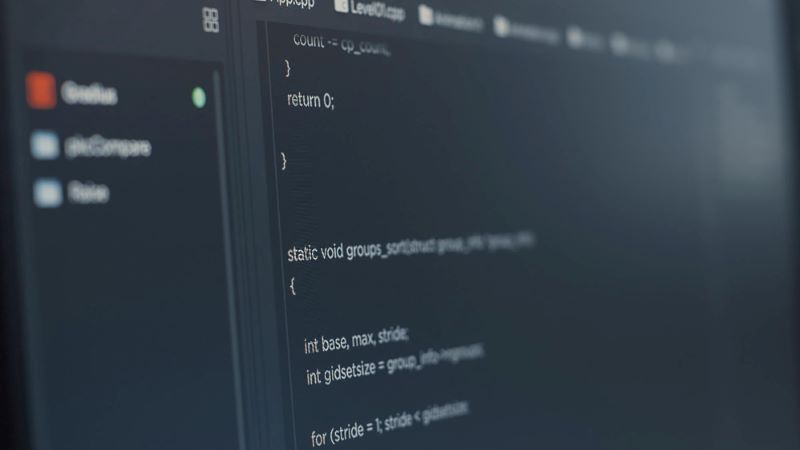Java vs. Python: Which Language Is Best for Me?
Programmers often debate the merits of Java vs. Python. They’re both versatile, well-designed languages with extensive libraries. But they also have important differences.
Table of Contents
So, which language should you learn first? Before you get started, it’s a good idea to take the time to understand the advantages of Java over Python and some of the main Python benefits over Java.
Java vs. Python: A Brief Overview

Java and Python are two of the most popular programming languages in the world. They both have excellent communities that can support a new programmer. That’s why Java vs. Python is such a tough battle — they’re both valuable languages.
But of course, the two languages have clear differences. When you’re weighing the pros and cons of Java vs. Python, it’s important to consider your unique set of goals and circumstances.
For instance, both Java and Python are excellent choices for web scraping. API scraping — extracting data through an API — can also be done using either language. Both Java and Python have extensive libraries that make API scraping or web scraping a simple task.
Overall, Java is a faster language. It’s also very flexible — you can use it on many platforms, so Java is popular with developers. Java is widely used by large businesses that depend on it to run their complex applications. Amazon, Netflix, Spotify, and Zoom all use Java for their apps.
Python, on the other hand, is a great choice for junior programmers or for people who are just learning how to code. The language is simple and easy to read. Python also has extensive libraries which help new programmers get started.
If you’re a new programmer, a deeper dive into the advantages and disadvantages of Java vs. Python should help you get started. We’ll discuss the best reasons to learn each language and look at the applications of Java and Python.
Why Do I Need To Learn Python?

Python is quickly becoming one of the most popular coding languages in the world. The language, developed in 1991, was designed to be straightforward. And because it has such a large community of users, new Python users can easily find the support and the libraries they need.
It’s easy to learn, which means that you can start putting your new coding skills to work quickly. Python uses a simple syntax and allows coders to enter lines of code into the terminal one by one instead of building an entire program first.
This language is a great choice for programmers who want to hit the ground running and get started building applications quickly. There’s a lot of demand for classes that teach Python programming for the absolute beginner because the learning curve isn’t too steep.
Python is widely used in data science, finance, and machine learning. If you’re interested in artificial intelligence or a similar field, then Python could be a great language to learn.
Python benefits over Java
Java vs. Python is a tough choice. Studying the pros and cons of Python may help you make a decision.
- Flexibility: One of the biggest advantages of Python is its flexibility. It might be one of the most versatile coding languages around. Coders can use Python to take on a wide range of tasks and create different types of applications.
- Multiplatform compatibility: Python works on several different platforms, like Windows and Linux. You don’t need to learn a whole new code for each platform. You can just get an interpreter to make Python operate on that platform.
- Quick coding: Python’s dynamic typing allows coders to create and enter code one line at a time, so you can quickly build new applications or add new features to existing ones. Python’s asynchronous coding makes the editing process easier because every line of code operates independently. You don’t need to overhaul the whole application every time you introduce a new line of code.
- Library availability: It’s worth stressing that Python’s huge libraries make life easier for new coders. You’ll be able to find ready-made code for many common tasks and commands, which will save time and resources. Python libraries also include multipurpose code that can save programmers time.
Building a proxy for Java and a proxy for Python is also easy. If you want to set up a proxy for web scraping, you’ll be able to find tutorials that take you through the process step-by-step. Web crawling with Python is also straightforward and easy to learn.
Disadvantages of Python
Every programming language has disadvantages, and Python is no exception. The cons are very important in the Java vs. Python debate, so you’ll want to consider them carefully.
- Speed: Python can be very slow to execute. We’ve talked about how the code is quick to write and implement and how you can code Python one line at a time. But the flip side is that the program executes a single thread at a time. The result can be a slower-than-ideal application. Depending on your goals, this may or may not matter to you.
- Mobile operating system hiccups: Python also lacks native compatibility with some platforms, notably iOS and Android. That doesn’t mean you can’t use it on those platforms, but you’ll need to spend more time working on the project. Again, this may or may not impact your consideration of Java vs. Python.
Now Tell Me Why I Should Learn Java

Java is one of the most popular programming languages around. It’s chiefly valued for its speed and sophistication. Like Python, Java is fairly easy to learn. It also has a huge community of users around the world so that new programmers can take advantage of the available support. And, like Python, Java has extensive libraries that users can draw from. But it has a few edges over Python.
Advantages of Java over Python
Java’s popularity has lasted this long for a few reasons:
- Faster coding: Java is a “compiled” language. This means that Java code is instantly converted to “machine code,” or the internal language of ones and zeros the computer’s CPU reads. Writing code in Java is like taking a shortcut into your computer’s command center. Using Java means that the CPU can execute tasks much more quickly without the need for interpretation.
- Better support for heavy app traffic: Java is popular with coders working on enterprise-level applications. Major organizations often use it to build web applications since Java’s speed allows applications to respond to queries quickly, even when huge numbers of people are using the app at the same time.
- More efficient: Besides being fast, Java is also efficient. The swap function in Java, for example, lets coders quickly and easily “swap” one variable for another. There is no swap function in Python. It’s possible to achieve the same results, but doing so is more difficult and cumbersome. The language also allows you to execute more than one thread at once, which can further speed up processes and deliver a cleaner user experience.
It’s easy to build a proxy server using Java, too. In fact, it’s one of the best scraping programming languages around. The process is straightforward and quick. If you’re building a proxy for web scraping, you can use Java.
Disadvantages of Java
Java has some cons that Python doesn’t share:
- Taxes computer memory: Java can be a drain on computer memory. If you’re not careful, this can lead to slower processing times. Java has cleanup processes that are intended to save memory space, but these processes are slow.
- Not great for desktop applications: Java also doesn’t work as well for desktop applications as some other programming languages do. It’s ideal for mobile apps but doesn’t always perform well on desktops. For some programmers, that may tip the scales in the debate over Java vs. Python.
The Bottom Line: Java vs. Python

Both Java and Python are versatile, easy to learn, and powerful programming languages. Both are excellent tools for web scraping and API scraping.
Which language is right for you? Ideally, you would learn both. But pick the language that best meets your current needs and circumstances to get started.
If you don’t have the time, resources, or labor power to learn a coding language, Scraping Robot can design a customized scraping solution that meets your company’s needs. Our API integrates with any programming language and can even manage proxies for you. That’s just one less task on your plate. Get started with a demo today.
The information contained within this article, including information posted by official staff, guest-submitted material, message board postings, or other third-party material is presented solely for the purposes of education and furtherance of the knowledge of the reader. All trademarks used in this publication are hereby acknowledged as the property of their respective owners.
